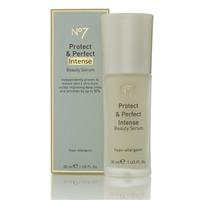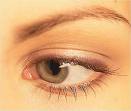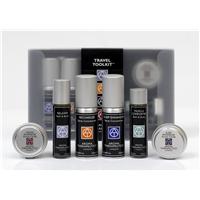

London: From Alpine shrine to urban boutique, theres nothing like a bit of R&R to boost mind and body. Savvy spas found within Preferred Hotel Group properties are combining bespoke treatments and ancient techniques with sumptuous surroundings to recharge and refresh.
Harness the healing powers of cutting-edge treatments by scheduling them into day-to-day life, or for the ultimate treat, take time out for a weekend spa escape.
Enjoy holistic healing at The Royal Garden Hotel, a detox at Excelsior Palace Hotel in timeless Rapallo, or a natural body peel guaranteed to make you glow at Majestic Hotel & Spa, Barcelona. Let experienced professionals scrub away your stress, soothe your senses, and massage your muscles into a state of bliss. Whatever youre looking for, theres something to meet and exceed every weary damsels need.
Preferred Hotel Groups world-class spas offer top-to-toe pampering with the following treatments and packages:
Natural Escape– The K Club, Kildare, Ireland www.preferredhotels.com
Located just 40 minutes from Dublin and set amongst 550 acres of County Kildare countryside, this elegantly restored country house is a classic five-star rural retreat and the perfect location for a day of pampering. A hidden oasis of luxury, The K Spa uses natural extracts in its treatments to encourage the release and elimination of unwanted toxins.
Combat dehydration with the Citrus Detox Reviver Wrap. Rich in pink grapefruit, juniper, and rosemary, these ingredients flush out toxins and leave skin looking dewy and revived. Relieve stress and strengthen muscles with Aromatherapy Associates Renew Rose Indulgence Facial. More than just a facial, the treatment includes a back massage using a new rose essential oil.
Overnight it with The K Spa Detox Package, which includes accommodation in a superior room, Continental breakfast, Citrus Detox Reviver Wrap, aromatherapy facial and back massage.
Treatment prices: The Citrus Detox Reviver Wrap costs £112 / 120; The Aromatherapy Associates Renew Rose Indulgence Facial costs £136 / 145
Package prices start from £282 / 295 based on two people sharing a double room.
Glow like a Goddess – Majestic Hotel & Spa, Barcelona, Spainwww.preferredhotels.com
Take time out from city hustle and bustle at the Majestic Hotel & Spa. Located on the Paseo de Gracina, in the heart of Barcelona, the hotel boasts 303 sumptuous rooms. Lunch at Bar Majestic and re-energize at the spa. Protect and perfect with oxygenating facials, manicures, pedicures, heat treatments, and relaxing massages using techniques passed down from generation to generation.
Get silky-smooth skin with the Crystal Honey treatment, a hydrating body peel using particles of crystallized honey which gently exfoliates, leaving your skin lustrous. Or, opt for the Ice Relax treatment after a long day on your feet. Using a refreshing gel of plant extracts to sooth tired legs and swollen ankles, this treatment rewards you with pretty party feet.
Treatment prices: The Crystal Honey treatment costs £92 / 97; The Ice Relax treatment costs £64 / 67
Package prices for a two-night stay in a classic room start from £323 / 338 based on two people sharing.
Heaven Scent – Royal Garden Hotel, London, England www.summithotels.com
Walk through the doors of the Royal Garden Hotel and leave worries behind. With its views of Kensington Palace, Hyde Park, and the Royal Albert Hall, the setting will give you a serene perspective on life. The Soma Centre, the hotels holistic health centre, offers treatments with cosmetic and therapeutic benefits as well as yoga, pilates, kickboxing, and aerobics so you can have a total body experience.
Treat the senses with a tailor-made Aroma Prescription Massage using synergistically blended essential oils designed to naturally enhance and sooth the body. Whether you need calming and relaxing, stress and tension relief, a revitalising lift or a sleep inducing formula to cure insomnia, theres a remedy to suit all.
Treatment prices: The Aroma Prescription Massage starts from £40 / 41.
Package prices for a two-night stay in a standard room start from £418 / 399 based on single occupancy.
And for those looking for something further afield, try one of these experiential getaways
Hightail it to the Hills – Grand Hotel Eden, Lugano, Switzerland www.summithotels.com
Situated on the edge of Lake Lugano, with stunning views of the city and Paradiso Alps, the tranquil setting of the Grand Hotel Eden offers the perfect location to escape and unwind. Take time out at the new Eden Spa, which boasts a eucalyptus steam room, sauna and sundeck, perfectly positioned to relax by the lake or even take a dip during the summer season.
The Edens Pampering Break includes a two-night stay for two in a superior double room with lakeside view, breakfast, a bottle of sparkling wine, three course candle-lit dinner and two relaxing spa treatments. Try the Traditional Massage, to release stress and muscle tension or the Aromatic Beauty Touch, which uses an ancient Egyptian charming technique for deep relaxation.
Package prices start from £308 / CHF 488 per person, including city tax.
De-stress and Detox – Excelsior Palace Hotel, Rapallo, Italywww.preferredhotels.com
Relax and feel renewed at this glamorous Italian hotel overlooking the stunning Portofino Coast and Bay of Rapallo. Recently restored to turn-of-the-century splendour, the hotel boasts a panoramic swimming pool with sea view and an exclusive wellness centre. Book a getaway to this luxurious retreat and youll be sure to return home body beautiful.
Dine at the hotels restaurant, Lord Byron, where the day starts with a breakfast buffet featuring regional and low-calorie delicacies, relax at The Beach Club or head to The Beauty Spa Health and Fitness Club, tucked out of the way in a natural rock formation. Try The Enveloppement Starter Detox Treatment; a body mask rich in active ingredients derived from freeze-dried seaweed, mineral salts and trace elements. Further enhanced by an infusion rich in purifying ingredients, this treatment will energise from head to toe.
Treatment prices: The Enveloppement Starter Detox Treatment costs £76 / 80
Package prices for a two-night stay in a classic room start from £236/ 247 based on two people sharing.
About Preferred Hotel Group
Celebrating 40 years of excellence, Preferred Hotel Group is proud to be a global leader in the hospitality industry, delivering high-performance sales, marketing and technology solutions to more than 700 independent hotels and resorts in over 75 countries. Its family of brands represents a collection of the finest hotels in the world and include: Preferred Hotels® & Resorts www.PreferredHotels.com, Preferred Boutique www.PreferredBoutique.com, Summit Hotels & Resorts www.SummitHotels.com, Sterling Hotels (www.SterlingHotels.com) and Historic Hotels of America www.HistoricHotels.org. For more information please visit www.PreferredHotelGroup.com.
In Autumn 2007, the company entered the luxury real estate market with the launch of Preferred Residences a membership and exchange program for luxury shared ownership resorts that provide an exceptional level of service and amenities. Properties are held to exacting standards derived from the same Preferred Global Standards of Excellence on which the company has built its 40-year heritage in the hospitality industry. For more information please visit www.PreferredResidences.com.



































